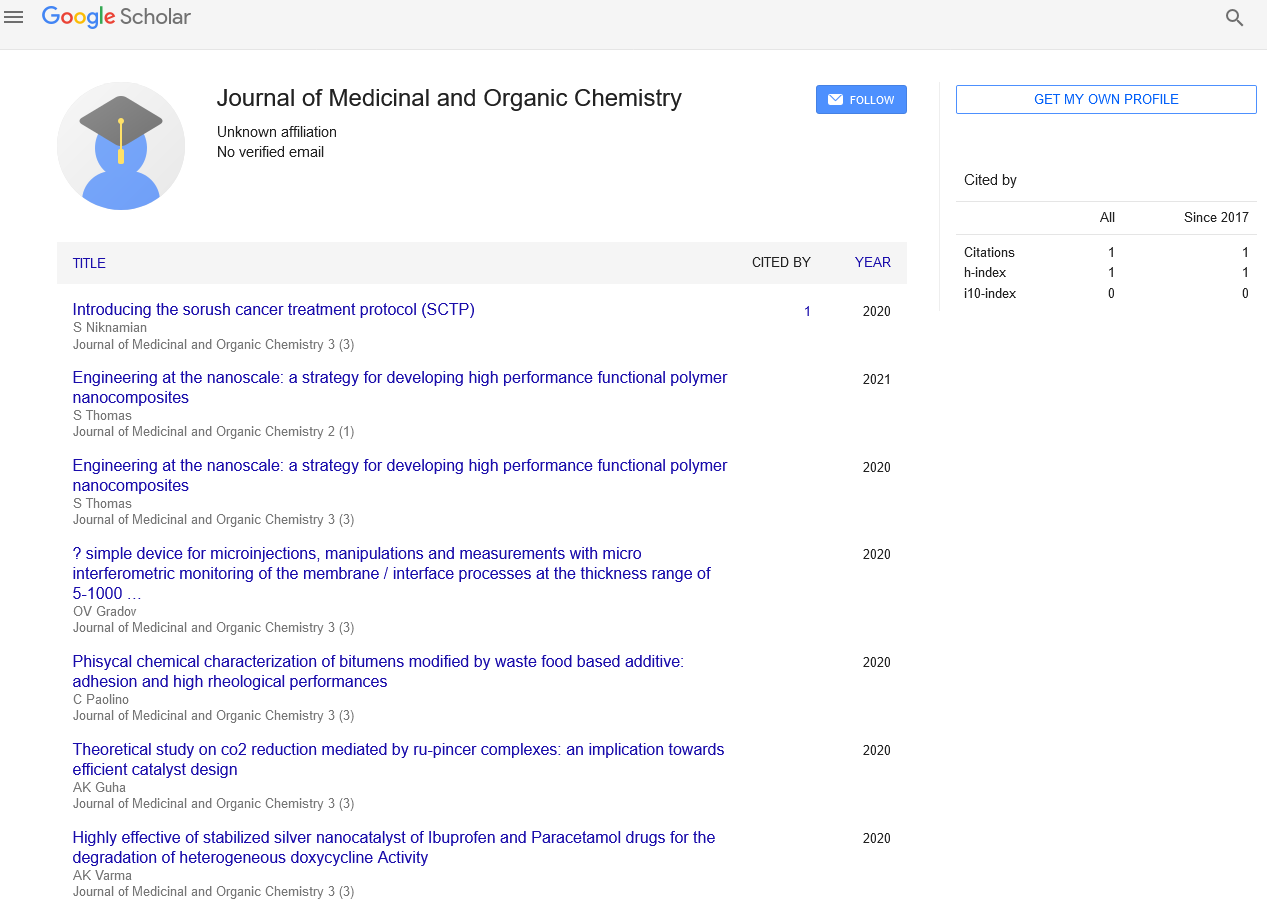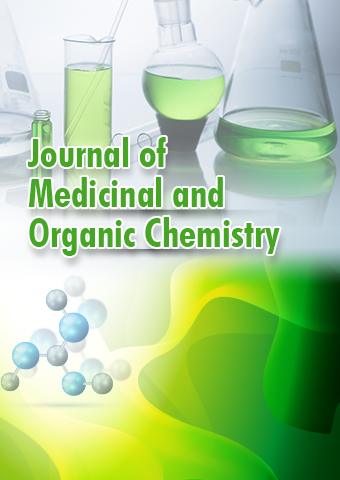Perspective - Journal of Medicinal and Organic Chemistry (2024) Volume 7, Issue 6
Combinatorial Chemistry: Innovations and Applications
- Corresponding Author:
- Ariane Clairoux
Department of Chemistry,
University of Science and Technology,
Nairobi,
Kenya
E-mail: ariane.clairoux@u.ca
Received: 03-Jul-2024, Manuscript No. JMOC-24-140629; Editor assigned: 08-Jul-2024, PreQC No. JMOC-24-140629 (PQ); Reviewed: 22-Jul-2024, QC No. JMOC-24-140629; Revised: 02- Dec-2024, Manuscript No. JMOC-24-140629 (R); Published: 30-Dec-2024, DOI: 10.37532/jmoc.2024.7(6).275-276
Introduction
Combinatorial chemistry stands at the intersection of creativity and precision, revolutionizing drug discovery, materials science and beyond. By systematically generating and screening vast libraries of compounds, this discipline accelerates the identification of novel molecules with desired properties. Its impact spans pharmaceuticals, agrochemicals, catalysis and materials science, promising solutions to some of society’s most pressing challenges.
Description
The genesis of combinatorial chemistry
Combinatorial chemistry emerged in the 1980s as a response to the traditional step-by-step synthesis of chemical compounds, which often proved slow and labor-intensive. The key idea behind combinatorial chemistry is to create large libraries of diverse molecules by simultaneously varying multiple components of a chemical structure. This approach enables rapid exploration of chemical space, where vast numbers of potential compounds can be synthesized and screened for desired properties.
The roots of combinatorial chemistry can be traced back to the mid-20th century, driven by the need for efficient methods to explore chemical space. Traditional synthesis methods were often time-consuming and limited in scope, hindering rapid advancement in drug discovery. The breakthrough came with the development of parallel synthesis techniques in the 1980s, pioneered by researchers like Bruce Merrifield and Mario Geysen. These methods allowed for the simultaneous creation of large libraries of compounds, laying the foundation for modern combinatorial chemistry.
Principles and techniques
At its core, combinatorial chemistry leverages the principles of diversity-oriented synthesis and parallel synthesis. Diversity-oriented synthesis focuses on maximizing structural diversity within compound libraries, enhancing the likelihood of discovering potent candidates. Parallel synthesis techniques enable the rapid creation of compound libraries by performing reactions in parallel, typically in a high-throughput manner. This approach exponentially increases the number of compounds synthesized and screened, facilitating the identification of lead molecules for further development.
Several techniques are employed in combinatorial chemistry to efficiently generate and screen compound libraries:
Parallel synthesis: This method involves synthesizing multiple compounds simultaneously on solid supports or in solution-phase reactors. Automation and robotics have significantly enhanced the throughput of parallel synthesis, enabling the creation of libraries containing thousands to millions of compounds.
Diversity-Oriented Synthesis (DOS): DOS focuses on maximizing the structural diversity of compound libraries by incorporating diverse building blocks and synthetic methodologies.
This approach aims to explore chemical space comprehensively, increasing the likelihood of discovering compounds with desired biological or physical properties.
High-Throughput Screening (HTS): Once a library of compounds is synthesized, HTS techniques are employed to rapidly evaluate each compound’s activity against specific biological targets or properties of interest. This screening process identifies promising lead compounds for further optimization and development.
Combinatorial libraries: These libraries can range from small-scale collections generated manually to large-scale libraries produced using automated synthesis platforms. Advanced computational tools and machine learning algorithms are increasingly used to design libraries that maximize chemical diversity and optimize compound properties.
Applications in drug discovery
One of the most impactful applications of combinatorial chemistry is in pharmaceutical research. By generating large libraries of compounds and screening them against biological targets, researchers can identify potential drug candidates more efficiently than with traditional methods. This accelerated process not only speeds up drug discovery but also reduces costs, making it feasible to explore a broader range of therapeutic targets. From cancer treatments to antibiotics, combinatorial chemistry has contributed to the development of numerous life-saving medications.
Beyond pharmaceuticals
While pharmaceuticals remain a primary focus, combinatorial chemistry has expanded into diverse fields.
In materials science, for instance, researchers use combinatorial approaches to discover new catalysts, polymers and electronic materials. By systematically varying composition and structure, scientists can optimize material properties for specific applications, such as renewable energy technologies or biomedical devices. This versatility underscores the broad impact of combinatorial chemistry across scientific disciplines.
Challenges and future directions
Despite its successes, combinatorial chemistry faces several challenges. The sheer volume of data generated requires advanced computational tools for analysis and interpretation. Furthermore, optimizing synthetic protocols to ensure reproducibility and scalability remains a persistent challenge. Future advancements may lie in integrating artificial intelligence and machine learning to predict compound properties and optimize synthesis pathways, further streamlining the discovery process.
Conclusion
Combinatorial chemistry continues to redefine the boundaries of scientific exploration and innovation. By enabling the rapid synthesis and screening of vast compound libraries, this discipline accelerates discovery across pharmaceuticals, materials science and beyond. As technology advances and interdisciplinary collaborations grow, the potential of combinatorial chemistry to address global challenges becomes increasingly promising. Whether developing new medicines or pioneering sustainable materials, combinatorial chemistry remains a cornerstone of modern scientific discovery.

